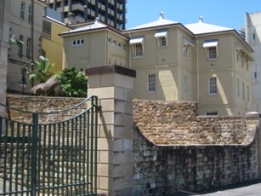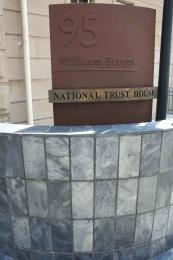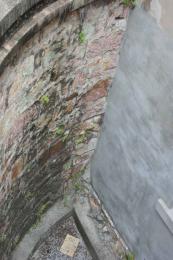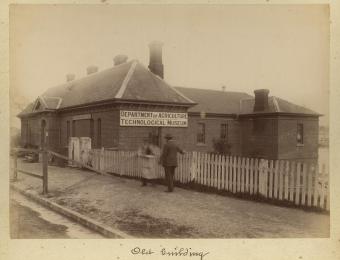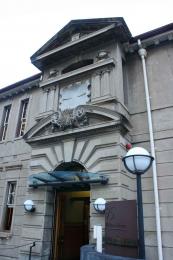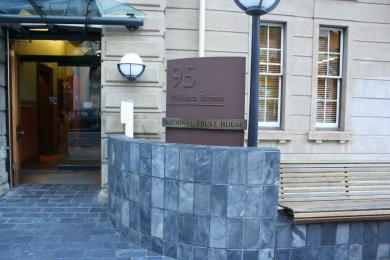
GSA Guide - National Trust House (1865-66, various extensions and refurbishments) Claimed
Gallery
URPoint Details
This URP is provided and maintained by members of the Geological Society of Australia as a geo-located community knowledge service.
Bounded by 95 William Street and Queen’s Wharf Road
History
The lower part of this building was originally built as an Immigration Depot in 1865-66. Thousands of immigrants found this to be the point of arrival to the new free colony of Queensland.
The Immigration Depot was designed by the office of Charles Tiffin, Queensland's first colonial architect. It was originally a single story building and had a three-story wing at the rear towards the river.
The rear wing contained three large separate wards; one for single women (William Street level), one for married couples (basement level), and one for single men at the sub-basement level.
From 1890 the Immigration Depot was adapted into offices for the newly established Department of Agriculture and Stock. It served that use for over 40 years.
Somewhere around 1900 an expansion saw another floor and a galvanised roof added. Further expansions to the site were most likely added between 1910 to 1930s, and were then subsequently demolished in 1994.
In the 1990s the building housed the Centenary of Federation offices (named Federation House) and then became the new home of the National Trust (Queensland) in 2002.
- Type:
- Landmark
- Establishment year:
- 1865
















